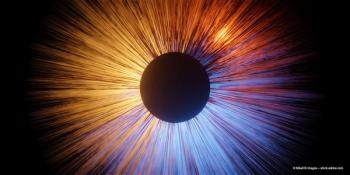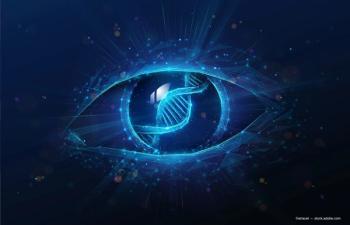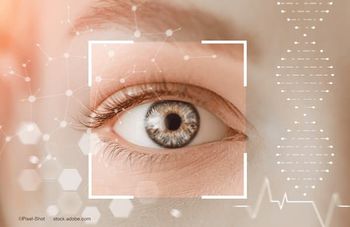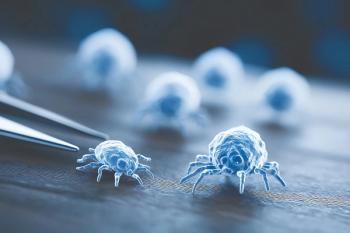
Novel imaging technique characterizes aqueous outflow
Aqueous angiography is being developed as a real-time imaging technique for studying aqueous outflow.
Take-home message: Aqueous angiography is being developed as a real-time imaging technique for studying aqueous outflow.
Reviewed by Alex Huang, MD, PhD
Los Angeles-Aqueous angiography is a new and developing imaging technique that is expected to provide valuable information on aqueous humor outflow.
Research completed so far in ex vivo models demonstrates that the technique is able to provide real-time and comprehensive information about aqueous humor outflow at physiologic IOPs.
Related:
Alex Huang, MD, PhD, assistant professor of ophthalmology, David Geffen School of Medicine, University of California, Los Angeles, affiliated with Doheny Eye Institute, described the importance of using aqueous angiography to understand aqueous outflow both to gain a greater basic understanding of the eye as well as to possibly improve glaucoma surgeries.
Editorial:
Understanding aqueous outflow
Dr. Huang explained that aqueous humor outflow is conventionally taught from an intraocular perspective using a two-dimensional view in which the aqueous is produced at the ciliary processes and travels through outflow pathways.
Editorial:
However, when converting this two-dimensional view into a three-dimensional eye and viewed externally from the front, an impression of uniform and circumferential outflow around the limbus is created.
The reality, however, is that aqueous humor outflow is segmental in nature.
Recent:
“There may be areas where outflow is good and areas where it is bad, and it may be segmentally different between individuals and also between fellow eyes of the same individual,” Dr. Huang said. “There may also be disease relevance to patterns of aqueous humor outflow.”
For example, the ocular hypertensive component of glaucoma may represent the loss of functional segmental units, he noted.
Relevance to treatment
In addition, there may be treatment relevance to characterizing aqueous humor outflow.
Related:
“Perhaps the inconsistent results being achieved in trabecular targeted microinvasive glaucoma surgeries may be explained by routine nasal placement in the eye that does not necessarily access the correct locations,” Dr. Huang said. “Therefore, imagine if we were able to see exactly where aqueous humor was flowing.”
Related:
Studies performed so far using enucleated porcine, bovine, and human eyes with various tracer dyes identified angiographically positive and negative regions of outflow.
Simultaneous imaging with anterior segment OCT provided confirmation that the staining observed through aqueous angiography represented true aqueous humor outflow, Dr. Huang said.
Related:
Enucleated eyes
In another experiment, aqueous angiography was used to characterize outflow in groups of enucleated porcine eyes where pressure was maintained at 10 or 30 mm Hg. Statistical analyses confirmed the qualitative appreciation of segmental outflow and also suggested that there was no single best or worst quadrant.
Technological advances:
Aqueous angiography performed in enucleated human eyes showed differences in outflow patterns between individuals of the same age and gender and also between the two eyes of each individual.
Importantly, a video of aqueous angiography performed in another human enucleated eye demonstrated that the technique provided real-time information, as the location of the signal in that subject’s right eye could be seen to move from superior to superior nasal, to nasal, inferior nasal, and inferior temporal.
Practice Management:
“For whatever reason, there was never any signal in this eye from the superior temporal region,” Dr. Huang said. “The next step is to establish aqueous angiography’s performance as an in vivo imaging technique, and IRB approval has been obtained to begin that work.”
Details regarding this new imaging technique and results were published in January 2016 in PLoS ONE (1/2016).
Debate:
Alex Ansun Huang, MD, PhD
This article is adapted from Dr. Huang’s presentation at the 2015 meeting of the American Academy of Ophthalmology. Dr. Huang receives research financial support from Glaukos Corp. and research materials from Heidelberg Engineering.
Newsletter
Don’t miss out—get Ophthalmology Times updates on the latest clinical advancements and expert interviews, straight to your inbox.








































